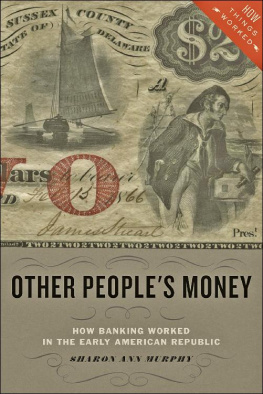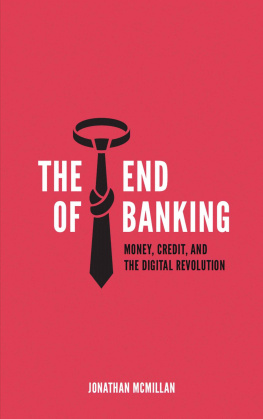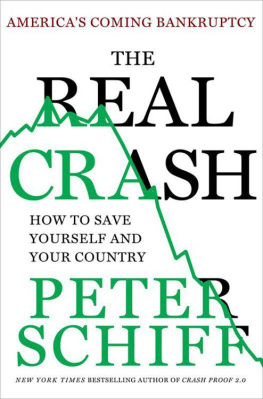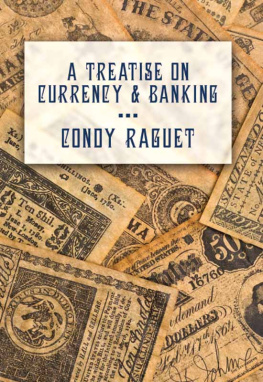THE NEXT MONEY CRASH
and How to Avoid It
Proceedings from a Conference at the Federal
Reserve Bank of Philadelphia Building
WILLIAM C. DUNKELBERG, ULI KORTSCH,
LAURENCE KOTLIKOFF, DAVID KOTOK, MICHAEL KUMHOF, WILLIAM POOLE, JEFFREY SACHS, AND ADAIR TURNER

THE NEXT MONEY CRASH and How to Avoid It
Proceedings from a Conference at the Federal Reserve Bank of Philadelphia Building
Copyright 2014 William C. Dunkelberg, Uli Kortsch, Laurence Kotlikoff, David Kotok, Michael Kumhof, William Poole, Jeffrey Sachs, and Adair Turner.
All rights reserved. No part of this book may be used or reproduced by any means, graphic, electronic, or mechanical, including photocopying, recording, taping or by any information storage retrieval system without the written permission of the publisher except in the case of brief quotations embodied in critical articles and reviews.
iUniverse
1663 Liberty Drive
Bloomington, IN 47403
www.iuniverse.com
1-800-Authors (1-800-288-4677)
Because of the dynamic nature of the Internet, any web addresses or links contained in this book may have changed since publication and may no longer be valid. The views expressed in this work are solely those of the author and do not necessarily reflect the views of the publisher, and the publisher hereby disclaims any responsibility for them.
Any people depicted in stock imagery provided by Thinkstock are models, and such images are being used for illustrative purposes only.
Certain stock imagery Thinkstock.
ISBN: 978-1-4917-3950-1 (sc)
ISBN: 978-1-4917-3949-5 (hc)
ISBN: 978-1-4917-3951-8 (e)
Library of Congress Control Number: 2014912032
iUniverse rev. date: 07/11/2014
Contents
To those who know the times and have the courage to take action
By this time we all know how close we came to a complete global meltdown in the financial world during the Great Recession, especially after the bankruptcy of Lehman Brothers on September 15, 2008. Here is a partial list of what we saw:
The longest and deepest US recession in the post-WWII period
A near doubling of the US unemployment rate
Negative home equity for 22 percent of all US home owners as late as October 2012
Massive increase in mortgage foreclosures
Significant decrease in retirement savings
US Real Gross Domestic Product (real GDP) having fallen at its fastest rate since the 1950s
Civil unrest in Greece due to economic distress
Major sovereign debt countries, especially the weaker members of the eurozone
A virtual paralysis of interbank lending
Social consequences, such as a decrease in the birthrate as well as the marriage rate, an increase in divorces, increased child malnutrition, etc.
Innumerable articles and many books have been written on the supposed causes of this series of events, many of them very factual with respect to the decisions and actions of governments, banks, and companies. The premise of this book is that by far the majority of these were analyzing symptoms and not going to the very root of the matter that created those conditions in the first place.
Since those years, we have greatly increased the regulatory complexity of our financial system through the Dodd-Frank bill in the United States, as well as the establishment of Federal Reserve Bank oversight on systemically important financial institutions ( SIFI s). This ongoing burden is all in the name of strengthening our financial system so that the government, through its capacity to tax its citizens, need not do that again by being forced to ride to the rescue. Many believe that the untold billions in regulatory costs this engenders are all for the sake of safety. This book argues that, again, these actions are only dealing with symptoms and not the root causes and that, in actual fact, we are not now any safer than we were before the Great Recession. And no, this cannot be laid at the feet of greedy bankers or politicians, even though they may have lent a helping hand. It is a systemic issue.
Since the establishment of the Federal Reserve Bank in 1913 and especially as a result of the Great Depression of the 1930s, we have most certainly created a plethora of stabilizing forces in our financial system. Yet Mark Buchanan in his book Ubiquity: Why Catastrophes Happen explains how we as humansas well as most natural systemshave a tendency to organize ourselves into critical states. As we continue to increase the complexity of our stabilizing efforts, we actually end up doing the opposite in the long term and end up creating what he calls a knife-edge of instability. At the point of this knife-edge, it takes only a random and often seemingly minor and unrelated event to topple the whole system into a collapse. This collapse then decreases the level of complexity or tension in the system so that a new level of stability is created. This begs the question as to whether the stabilizing steps taken over the last few decades, and especially the recent ones, have actually increased our level of macro stability or simply sharpened the knife-edge.
In analyzing the root causes, we recognize that the Great Recession was not an isolated event, but we view it as a continuum in the context of historical factors. In the olden days, if you needed money and the bank was closed (which was often, remember bankers hours?) life could be difficult. Technology and the demand for convenience and more complex banking services have eliminated most of those old inconveniences. But the importance of a properly functioning banking and payments system has not diminished; indeed it has become more and more important. When it fails to work properly, the cost is very high, as our most recent experience has shown.
At the core of these failures is the systems demand for leveraged risk. The guardians of our money, the providers of liquidity, have invariably mismanaged the funds that we entrusted to them in exchange for a safe and accordingly low return. In short, these institutions took risks with our money (and others money, with leverage) that we would not have taken ourselves and did so without our knowledge. When markets took these institutions to task for their inappropriate behavior, the punishment fell on the innocent citizens (major recessions) who simply wanted a safe place to hold their liquidity. When interest rates on government bonds go negative, meaning savers dont trust financial institutions and they pay our government for safety, it is clear that the financial system has failed.
What is money? The economics textbook will usually start with a functional definition, such as anything widely accepted as a means of payment. Historically, gold coins have served widely as money. Certificates issued with guaranteed gold backing were more convenient. This created the opportunity to issue more claims (as loans) than actual gold held, knowing (under normal circumstances) that not everyone would ask for their gold at the same time.
But once Guttenberg invented the printing press, new troubles arose. In the olden days, we defined money as currency in circulation plus deposits in checking accounts (deposits that paid no interest so were held for transactions purposes). Technology blurred this distinction, making it possible to quickly move funds from interest-earning deposits to checking accounts, eliminating the pass book savings and a trip to the bank to move funds. Backing currencies with precious metals has become a relic of the past, as it made providing a proper quantity of the means of exchange too difficult. Now, the value of a unit of currency is determined by the quantity of goods and services it will command.
Next page









